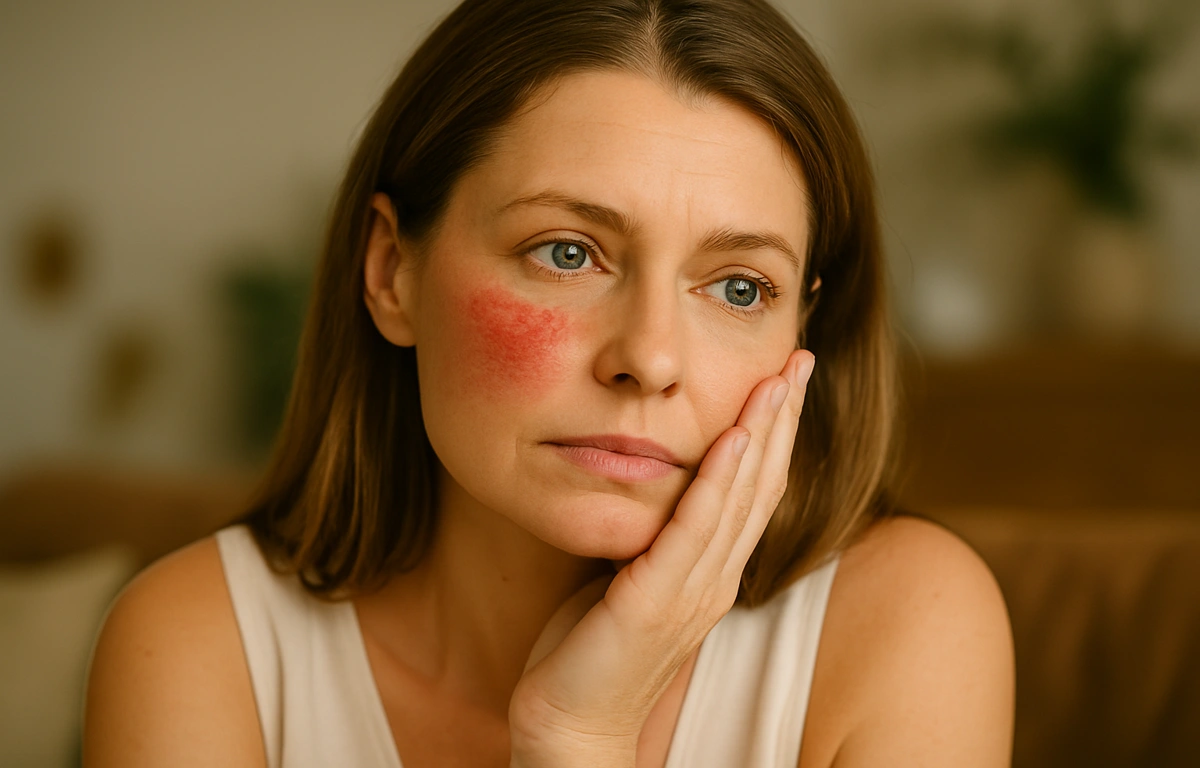A scientific guide for those who want to understand their skin
We tend to believe that high-quality cosmetics cannot harm us. They are expensive, tested, and labeled as hypoallergenic — therefore, safe. Yet even the most carefully chosen cream can sometimes cause redness, itching, or small rashes. And then comes a logical question: how did this happen, and what should we do next?
A cosmetic allergy is not just an unpleasant reaction; it is a signal of overload or imbalance within the skin. To understand why it occurs, it is important to look not only at the ingredients but also at the mechanisms of the skin itself.
What a Cosmetic Allergy Really Is
From a medical point of view, an allergic reaction is a hypersensitivity of the immune system to a certain substance that the body perceives as a threat. In the case of cosmetics, dozens of substances can become irritants — from fragrances and preservatives to protein components or essential oils.
At the same time, not all reactions that we call “allergies” are truly allergic. Sometimes it is contact dermatitis — irritation without an immune mechanism. Sometimes it is sensitization — a slow buildup of intolerance that appears after years of use. And sometimes the skin barrier is simply exhausted — and it reacts even to water or a familiar cream.
Why the Skin Suddenly Starts to “Rebel”
The skin is not just a shell but a complex immune organ. It constantly interacts with the external environment, and its cells learn to distinguish between “self” and “foreign.” When the barrier is weakened — due to stress, cold, excessive cleansing, or acid peels — receptors begin to respond to harmless substances as if they were enemies.
- Damage to the hydrolipid barrier. Excessive cleansing, alcohol-based toners, acid series, or retinoids make the skin vulnerable.
- Overload with actives. Combining acids, retinol, vitamin C, and niacinamide without adaptation often causes irritation.
- Hidden sensitization. A reaction may appear not immediately, but after months or years of regular use.
- Individual intolerance. Genetic predisposition is more common in people with atopic dermatitis or hay fever.
Teoxane — The Epitome of Dermatological Precision
The Swiss brand Teoxane is considered one of the most precise in the field of cosmeceuticals. Its formulas are developed not only by cosmetologists but also by bioengineers who study how hyaluronic acid molecules interact with the skin. The brand’s main idea is “activity without aggression.” Teoxane products contain stable and biocompatible ingredients that minimize the risk of irritation even for sensitive skin types.
This does not guarantee the complete absence of reactions, but the risk is significantly lower thanks to the RHA® technology — an elastic form of hyaluronic acid that supports the skin barrier and reduces the need for the skin to “defend itself” from external irritants.
Most Common Allergens in Cosmetic Formulas
| Category | Examples | Comment |
|---|---|---|
| Preservatives | Parabens, formaldehyde donors (DMDM Hydantoin, Imidazolidinyl Urea) | Protect the formula from microbes but may irritate sensitive skin. |
| Fragrances | Linalool, citronellol, eugenol, limonene; essential oils | Even “natural” aromatic blends often provoke reactions. |
| Colorants | FD&C dyes (Red 4, Blue 1, etc.) | Common in decorative cosmetics; may cause itching or redness. |
| Metals | Nickel, chromium, cobalt | May be present in pigments or migrate from packaging. |
| Botanical extracts | Calendula, lavender, citrus, tea tree | “Natural” does not always mean “safe” for allergy-prone skin. |
| Proteins | Soy, wheat, milk | Possible reactions in people with food allergies. |
Important: The label “hypoallergenic” does not mean “non-allergenic.” It only indicates that basic dermatological tests have been performed.
How a Cosmetic Allergy Looks
- Redness, rash, itching.
- Tightness or burning sensation.
- Swelling of eyelids or lips.
- Small fluid-filled blisters.
- Flaking and dryness.
- Rarely — tearing, coughing, or breathing difficulty (mainly with aerosols).
If symptoms worsen, stop using the product and consult a dermatologist.
How to Identify the Trigger
- Patch test. Apply a small amount of the product to the forearm or behind the ear. Check after 48 hours.
- Ingredient analysis. Check the end of the INCI list — that’s where fragrances and colorants are often hidden.
- Systematic observation. If different brands cause similar reactions, your barrier may be weakened.
- Professional testing. Epicutaneous tests by a dermatologist are the most accurate way to determine the allergen.
What to Do in Case of an Allergy
- Immediately stop using the suspected product.
- Rinse your face with cool water; panthenol or zinc-based products may help.
- Exclude actives (acids, retinoids, essential oils) for several days.
- Antihistamines — only as prescribed by a doctor.
- After healing, reintroduce cosmetics gradually: one new product per week.
How to Choose Safe Cosmetics
- Minimalist formulas. The shorter the INCI list, the lower the risk.
- Fragrance- and colorant-free. Look for labels like fragrance-free and colorant-free.
- Cosmeceutical-grade skincare. Professional brands such as Teoxane design their formulas according to dermatological standards and biocompatibility.
- Barrier support. Beneficial ingredients include ceramides, hyaluronic acid, squalane, and panthenol.
- Gradual introduction of new products. One product per week — the golden rule for tracking reactions.
When Cosmetics Stop Being “Just Cosmetics”
Understanding your skin is not a luxury — it’s a necessity. If allergies have become frequent, it’s not a verdict but a signal that it’s time to change strategy: move from chaotic testing to a scientific approach, from marketing promises to trusting brands with a genuine laboratory foundation.
Beautiful skin is not the one that never reacts, but the one that knows how to recover.

